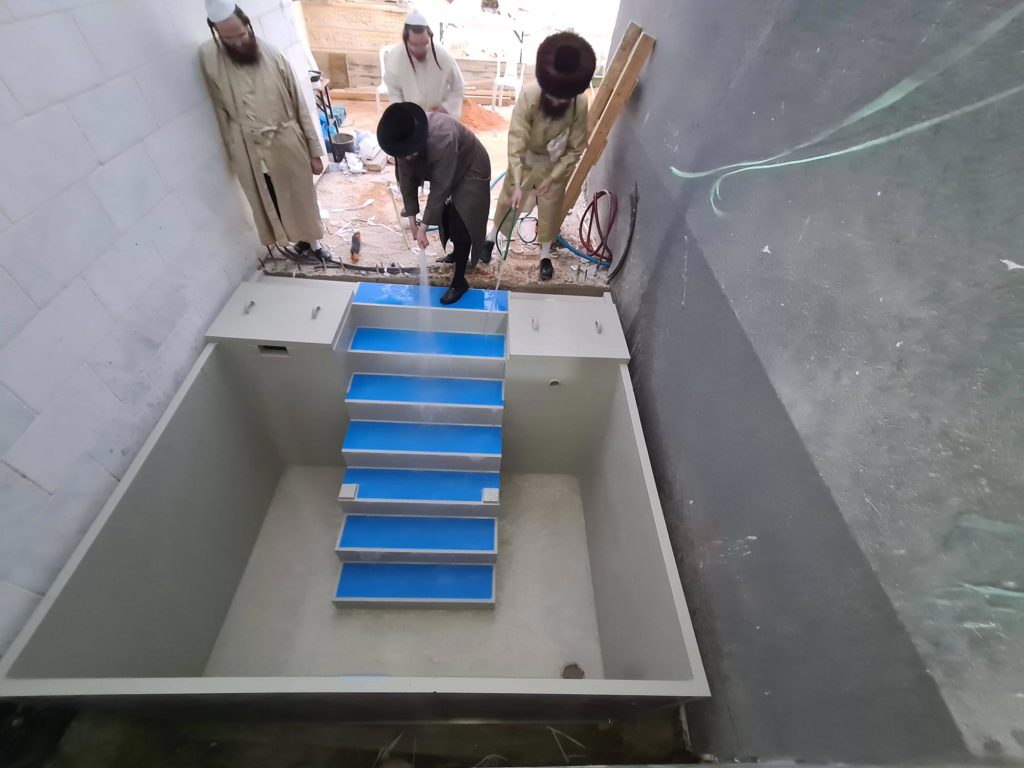HOW A MIKVEH MALCHUT IS INSTALLED
The assembly team arrives at the construction site accompanied by a rabbi who is an expert in mikvehs (the rabbi will sign a document certifying that he was present and supervised the construction process and that everything was done according to halachic requirements). Every mikveh accords with stringent women’s halacha.
The Mikveh Malchut team arrives with crude oil panels (the panels are separate from each other – “do not hold water”), that have been processed and polished and have a velvety feel similar to high-quality Corian surfaces.
In the first stage, the base is connected to the ground in such a way that it will not be possible to dismantle it and move the mikveh to another place – any attempt to do so will break the mikveh into pieces. Then the walls are connected (each wall consists of at least two sides that are connected on site – as per the responsa of Rabbi Moshe Feinstein) as well as the partitions and other parts of the mikveh.
The mikveh can be placed on the floor. In this case, the entrance and exit is by way of a ladder that is placed on both sides of the mikveh.
It is also possible to “sink” a Mikveh Malchut into the ground and to enter and exit it from a staircase.


The mikveh can be built according to the customer’s requirements:
* One rainwater bor and an immersion area
* Two rainwater “borot” and one immersion area
* 2 otzarot + a lower bor. This mikveh caters to all Jewish sectors – Sephardim, Ashkenazim, Chabad and Kabbalists
* A double bottom under which rainwater is stored with the immersion area above (Chabad method)
This form of construction can also be used to build a mikveh for utensils that is open to the public in neighborhoods and stores. The difference will be, of course, in the size of the mikveh and in that it has ‘shelves’ where people can place the dishes for immersion.
Important Information:
Any attempt to move the mikveh to another place will fail – the structure will collapse since there are no supports that allow the mikveh to be moved.
Because of the low cost of the mikveh, it is not economical to try to move it and much easier to buy a new one, since the cost of moving the mikveh is higher and more complicated than installing a new one.

